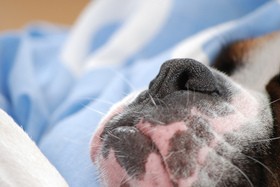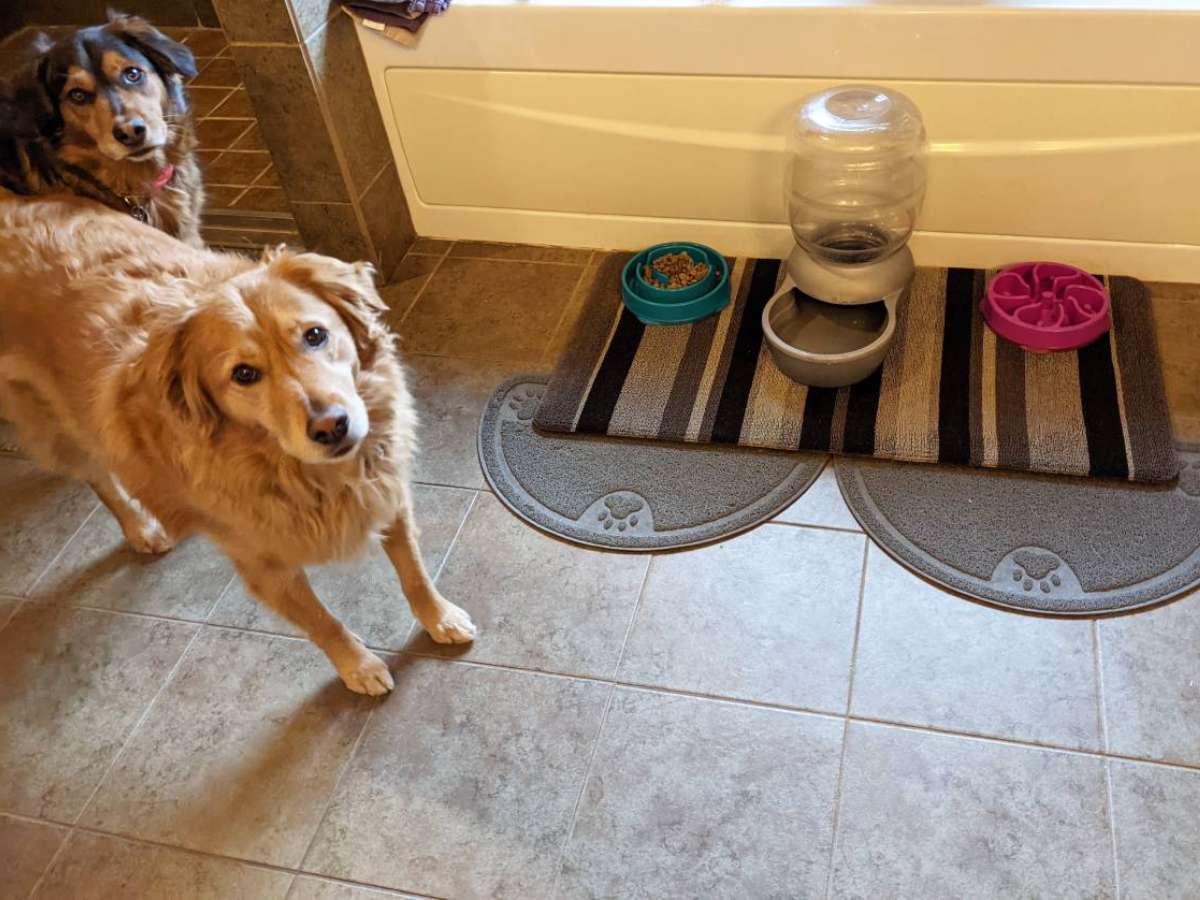 Most of us don’t really think about the sun and how it affects our dogs — except to be sure that we provide plenty of water and shade for our four-legged friends during the summer months.
Most of us don’t really think about the sun and how it affects our dogs — except to be sure that we provide plenty of water and shade for our four-legged friends during the summer months.
Right?
Well, believe it or not, your dog’s skin can be seriously damaged by the sun!
Yep, just like people, dogs get sunburns too. And you may not realize this, but dogs also get skin cancer from too much exposure to the sun.
Here’s what you need to know about dog sunburn, doggie skin cancer, and which dogs tend to suffer the most from sunburns…
Dogs Most Susceptible To Sunburn
Dogs that are most likely to suffer from sunburn are white dogs, hairless dogs, and dogs with light colored fur.
Their risk of dog sunburn and skin cancer in dogs is increased if they are not properly cared for by putting sunscreen on them.
Dog breeds that are most susceptible to sunburn are:
- Pitbulls
- Dalmatians
- Boxers
- Weineramers
- Greyhounds
- Chinese Crested Dog
The areas on a dog that are most likely to get sunburned are:
- nose
- tips of the ears
- around the mouth
- underbelly
- eyelids
Types of Dog Sunburns
Dogs don’t sunburn exactly the same way that people do.
You can tell if your dog has a sunburn by the look of your dog’s skin. If your dog’s skin looks like leather, or turns white, then your dog probably has a sunburn.
There are 3 different types of sunburns that dogs can get. Each should be taken very seriously:
Superficial partial thickness burns involve the top layer of skin and are the equivalent to first degree burns in humans. Whether or not the dog’s fur is still attached to the skin, the skin will look red but there won’t be any blisters.
Deep partial thickness burns affect the surface layer of your dog’s skin, as well as some layers that are deeper than the surface. These types of burns are similar to second degree burns in humans. However, unlike with humans, there are usually not blisters on dogs with deep partial thickness burns. However, the skin will be red, and you may be able to see more than one skin layer.
Full thickness burns are the equivalent to third degree burns. These types of burns are just plain nasty and very painful for your dog. This type of sunburn is so severe that it penetrates down through all the skin layers and may even affect tissue that is beneath the final layer of your dog’s skin.
Dogs that get sunburns are more susceptible to getting skin cancer later on.
Professional Treatment For Dog Sunburn
 Treatment of doggie sunburns depend upon how much damage there is to your dog’s skin and what type of sunburn he has.
Treatment of doggie sunburns depend upon how much damage there is to your dog’s skin and what type of sunburn he has.
No matter which type of sunburn you think your dog has, it’s a good idea to take your dog to the vet — especially if the skin is raw or broken or if your dog is visibly in pain.
Treatment for superficial partial thickness sunburns typically consists of the dog’s hair being shaved off of the burn area and the burn being washed with an iodine or chlorhexidine. Then, the burn is usually treated with a topical cream, like silver sulfadiazine. Generally speaking, once the vet treats your dog’s burn he will usually be sent home and you will be given further instructions for how to take care of the burn until it heals completely.
Treatment for deep partial thickness sunburns is always hospitalization. Once in the hospital, your dog will be given intravenous fluids to keep him hydrated and provide him with necessary electrolytes. After that, the burned area will be shaved and cleaned with iodine or chlorhexidine. The wound and the bandages will have to changed daily, and silver sulfadiazine applied. If more than 15% of your dog’s body has a sunburn, it’s possible that he may require skin grafts.
Treatment for full thickness sunburns is lengthy. Thankfully, full thickness sunburns are not common, because it would mean more hospital time and even more intensive treatment to help get all of your dog’s skin layers healed.
Home Remedies For A Mild Dog Sunburn
Ultimately, the degree of soreness and redness should determine whether your dog needs to see the vet or not. If your dog doesn’t seem to be in pain, and the skin has not been broken, then home remedies for soothing a sunburned dog might work for you.
But!… keep an eye on any areas on your dog that you suspect have been mildly sunburned. At the first sign of discomfort or skin irritation, a visit to the vet is in order.
- DIY Tips For Dog Sunburn
- Natural Remedies For Dog Sunburn
- How To Soothe A Sunburned Dog
- Treating Sunburn On A Dog
More About Dog Sunburn & Dog Skin Cancer
- Vet Info: Dog Melanoma
- How To Deal With Doggie Sunburn
- Solar Dermatitis and Squamous Cell Carcinoma
- Melanomas, Squamous Cell Carcinomas & Mast Cell Tumors In Dogs
- 5 Ways To Prevent Dog Sunburn
- Melanoma In Dogs
- Canine Melanoma Explained
- Photo: What A Dog’s Malignant Melanoma Looks Like
- Coping With Dog Cancer: Treatment Options + Helpful Advice




